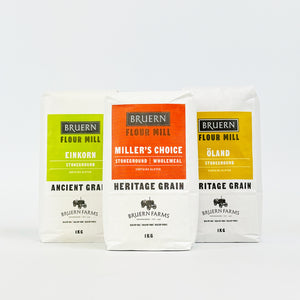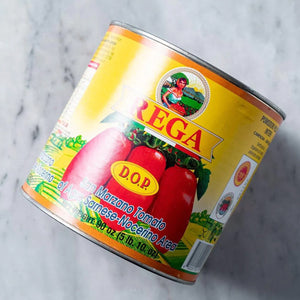
How To Make Sourdough Chapati Tutorial (Video) - Wayne Caddy, Sourdough Slingers.
Chapati is an unlevained flatbread from India. In this bread lesson we discuss adding a sourdough which is not traditional but I believe the sourdough adds a better depth of flavour. Adding sourdough is totally optional and without it the recipe still tastes great!
I could spend hours talking about sourdough and hope to add a lesson on this soon.
If you don't have any sourdough and want to create your very own then here is a recipe and method for you to follow. It will take around 3 to 5 days to create your own sourdough culture.
What is sourdough?
A sourdough is a flour and water mixture which has been naturally inoculated with wild yeasts (fungi) and lactobacilli (bacteria).
It takes time for them to grow in the flour and water and they both feed off the natural sugars found in the starch which as a byproduct produce carbon dioxide, lactic and acetic acids.
So here is a quick recipe and method to create your very own unique sourdough starter.
It's worth saying a few top tips before you start...
1. Clean hands.
2. Sterile container.
3. Use organic flour or untreated flour wherever possible.
4. Use a 500ml capacity jar/tub or similar with a lid.
5. Glass or plastic container is great...do not use metal as it can cause adverse reactions.
6. Use a lid...the fermentation mostly occurs without oxygen (anaerobic).
7. Use the end of a clean wooden spoon to mix your sourdough or clean hands.
8. Use filtered water but don't worry if you don't have any, it is not a deal breaker.
9. Make sure you stick to the temperatures below if you can...yeast and bacteria are sensitive to temperature and like it warm.
10. use a see-through container so you can see what's going on.
11. If at any stage the process starts to ferment quicker then bring forward your feed times... everyone's will ferment at different rates with so many varying factors.
12. an easy way to assess if it's ready to feed to the next stage is if it rises or doubles and looks very bubbly or starts to drop back... then it's ready to feed and go to the next stage.
13. If your starter begins to smell REALLY bad like very smelly socks or animal nitrate... then you have cultivated some foreign bacteria/moulds/yeasts that are not suitable for bread making... sorry, discard and start again.
The Sourdough Build Method... (no discard) "some recipes tell you to throw half of the amount away each time you feed", I personally don't believe in this method as it wastes flour.
Day 1 - "The Mother"
Bread flour 45g
Warm water (35c) 40g
"The Mother" Method - combine all ingredients and mix in your container until no visible dry flour. Lid your container and place in a warm place (30c).
Allow to rest for at least 12 hours. After this time you may see some slight bubbling which means you have some yeast activity. Don't worry if you don't at this stage it takes time.
Day 2 - "The Chef"
All of "The Mother"
Bread flour 45g
Warm water (35c) 40g
"The Chef" Method - combine all ingredients to "The Mother" and mix in your container until no visible dry flour. Lid your container and place in a warm place (30c).
Allow to rest for at least 12 hours. After this time you should see more bubbles and may smell alcoholic and lactic, like a yogurt.
Day 3 - "The Levain"
All of "The Chef"
Bread flour 45g
Cooler water (18c) 40g
"The Levain" Method - combine all ingredients to "The Chef" and mix in your container until no visible dry flour. Lid your container and place in a cool place (18c).
Allow to rest for at least 12 hours. After this time you should see a lot more bubbles and rise and should smell alcoholic, lactic and acetic like very mild vinegar.
Finished... if you have lots of bubbles and and your sourdough starter (levain) smells like a good fruity wheat beer with lactic and acetic notes you now have a fully cultured sourdough starter culture with which you can make and bake bread.
Keeping it going
Now you have created a sourdough starter you need to keep it alive by feeding it with more flour and water. You can keep the same flours we have used in the 3 day process or change them... that is totally up to you which flour or blends of flour you use.
How often should you feed?
If you only bake once a week or less then I would recommend you feed once a week using cool water and store in the refrigerator. The cooler temperatures slow down the yeast activity as it doesn't eat all the sugars in the flour so quickly.
If you bake 3 or more times a week then feed daily and keep out at room temperature.
Here is a typical feeding recipe to get you going once you have achieved a successful build. This is a sample recipe which you can batch up or down depending on the quantities you require.
Feeding Recipe
Bread flour 45g
Water 40g
Sourdough starter 5g
With more than thirty years of experience in the industry, Wayne is keen to pass on his expertise to a new generation of artisan bakers.
Master Baker at The School of Artisan Food on the Welbeck Estate for the past nine years, Wayne Caddy has been awarded the prestigious Elite de la Boulangerie Internationale award and becomes one of only a handful of people across the world to join the Elite Club of Artisanal Bakery.
Wayne was the first UK baker to compete at the baking Coupe du Monde and Masters de la Boulangerie. Wayne was in Paris as part of a select panel of international bakers judging the profession’s best candidates competing for the highly sought after World Master Baker title.
Wayne teaches a range of shorter courses for the home baker through to the professional wanting to update skills and expand their knowledge of artisan baking techniques





Leave a comment